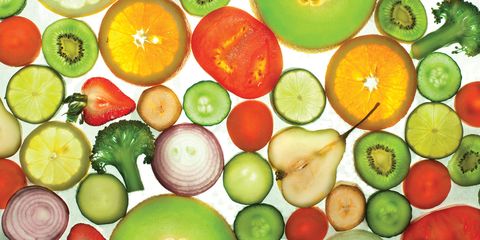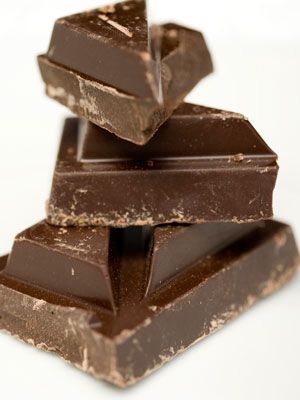
Before I even had a clue what words like “fat-shaming” and “fat phobia” meant, I knew I hated my body. I knew that as early as age 10. My arms were too fat, I couldn’t find cool clothes to fit, and everyone in my class made sure to let me know I was bigger than them. By the time I was in high school, this self-loathing had set in motion nearly a decade of food restriction, prescription diet pills, and a general obsession with just not being fat anymore.
When I was in high school, I would go to Weight Watchers meetings with women twice my age in hopes of picking up their weight loss tips. Later, I would go to a shady diet doctor that prescribed 17-year-old me phentermine, a drug that caused insomnia and anxiety. By the time I was in college, I was in the throes of a full-scale eating disorder, where I survived on vodka, diet pills, and the occasional binge meal from my dorm’s dining hall. I’d lost close to 60 pounds, but I was still, inevitably, fat.
After I left college, I started using social media at my job as a marketing intern at a food bank. From there, after just a few interactions on Twitter, I was introduced to an entire world of body acceptance, and more specifically, fat body acceptance. I’m not entirely sure how I stumbled upon fat acceptance Tumblr blogs, but it probably happened after I started following social justice activists like Amanda Levitt and Melissa McEwanon Twitter and Tumblr.
Through Tumblr blogs and Twitter hashtags, I saw fat women of all sizes, races, and identities who were radically accepting of their fat bodies and even had somehow figured out a way to love them. From there, I was able to work through decades of body image issues entirely online. Perhaps the most transformative moment for me was when I stumbled upon Substantia Jones’s Adipositivity project. Seeing nude photos of fat women who were unabashedly unashamed of their bodies was the tipping point I needed.
I spent the next two years immersed in fat acceptance. I read as much scholarly work as I could, followed body-positive bloggers, and generally began to believe that my body was actually pretty great. I’m not sure how exactly these words and photos were able to unravel the many years of hating my body, but I was finally able to wear sleeveless shirts, take vanity selfies, and just generally stop worrying so damn much about how fat I was. I was finally in a place where I loved my body, even though it took a lot of work.
In that time, though, I gradually stopped caring about what I ate or even trying to exercise. I finally felt comfortable in my own skin, and I had only previously viewed exercise and dieting as a way to feel thinner. In September 2013, I was laid off and started working at home as a freelance writer, which meant lots of sitting around at home in front of my computer. Since that time, I have gained nearly 40 pounds, largely because I have been entirely inactive and eating out of a drive-thru window way too often.
And it’s not as if I didn’t realize it was happening. Every time I would start thinking that it was time to eat more healthily, after two or three days in a row of going to McDonald’s for lunch, I would talk myself out of it by recalling statistics that suggest that dieting doesn’t work in the long term.
These statistics are major talking points in the fat acceptance community, largely because most of the people in the movement have spent decades on fad diets and Weight Watchers. But while the jury is still out on whether long-term calorie restriction results in weight loss, I managed to ignore the ample evidence that a poor diet can lead to everything from diabetes to heart disease.
Even though I was in a better place with my body, I still had no idea how to eat in a balanced way. Thanks to years of disordered eating, I’m guilty of having a very “all or nothing” mentality when it comes to food. This dates back to my dieting days, where I would tell myself that if I have the McDonald’s for lunch, I didn’t “deserve” the kale salad for dinner because I was treating my body like a garbage dump. In my view, eating a kale salad wasn’t for fat people, it was for thin people who did yoga five times a week.
I want to be clear that my warped views on food have nothing to do with what the fat acceptance movement is trying to accomplish. There is no fat acceptance group on the planet that tells people to eat unhealthily — they just don’t judge you if you do. It isn’t their fault that when they said, “Love your body unconditionally,” I heard, “Pack it full of whatever garbage you desire, consequences be damned.” Finally, though, I think I have come to a point where I realize that loving my body also means treating it well and that has nothing to do with how much food I can stuff into my face.
Which is why I’m going on a diet after the holidays. There are consequences, and I’m really starting to feel them.
I hesitate to use the word “diet,” but in this case, it’s accurate. There are some foods that need to go. I’m giving up fast food, cooling it on the sugar, and trying to eat a few more vegetables. I don’t plan to count calories or track food, but I will be monitoring portions and loosely tracking macronutrients. I’ve been trying to ease into healthy eating in the last few weeks, but it’s been slow going, especially when all I want to do is eat piles of comfort food made with copious amounts of Velveeta. Once the holidays are over, it is going to be steel-cut oats, lean proteins, and lots of veggies for the foreseeable future.
And not because I have somehow regressed back into hating my body. I just don’t feel very good, and I know that’s because I’m eating like a 21-year-old frat boy. I know that eating food from a garden or farm makes me feel better than a meal from a window.
In eating healthier, I’m not trying to cure my fat. I’m not even interested in losing weight, to the point that I am not restricting high-calorie foods like nuts and olive oil. What I am doing, though, is trying to lessen my chronic fatigue, reduce the persistent brain fog, and have fewer of those annoying mid-afternoon headaches. All these symptoms are very closely associated with poor diet, not with being fat.
Eating healthier without viewing fat as the enemy is near impossible in our diet-driven culture. Healthy eating tools, even those that are considered “body positive,” often highlight fat loss as the most important benefit of improving one’s diet. There are few exercise programs that emphasize general wellness over burning calories.
Fortunately, studying fat acceptance has given me plenty of tools that I can use to prevent slipping into bad habits. Perhaps most important, fat acceptance has taught me that there is no such thing as a “bad” food. Food doesn’t have moral value, and I’ve finally gotten to a point where kale salads and French fries can coexist. The movement has also helped me realize that exercise isn’t just about being skinny, it’s about having a body that doesn’t get exhausted after walking up the stairs or walking the dog. I’m also finally comfortable enough with my body that I can do lots of creative things for exercise, like swimming, that don’t involve being holed up in a sweaty, stinking gym.
I know that despite how many salads I eat or miles I log on the treadmill, I will still probably be fat for the rest of my life. Finally, I think I’m OK with that. But part of loving my fat body is also taking care of it the best way that I know how, which means finally treating it with the respect that it deserves.
[“source-cosmopolitan”]

